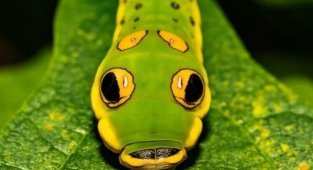There was a post recently about the development of insects, but it was somewhat ignorant from a biological point of view. Let's correct this omission (who is too lazy to read the video at the end). 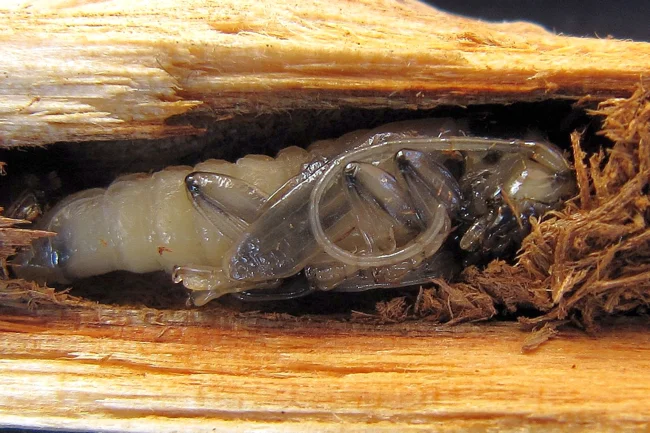
So there are two development cycles of insects:
Incomplete metamorphosis, or hemimetamorphosis, is a type of metamorphosis in which, as the insect develops, it goes through the following stages: egg, larva, imago.
This type of development is typical for bedbugs, dragonflies, cockroaches, mantises, etc. 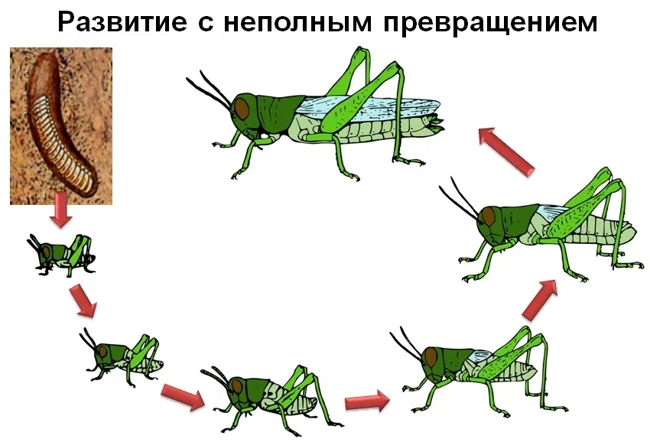
Complete metamorphosis is a type of metamorphosis in which an insect, as it develops, goes through a series of successive stages: egg, larva, pupa, adult.
This type of development is typical for beetles, butterflies, hymenoptera, etc. 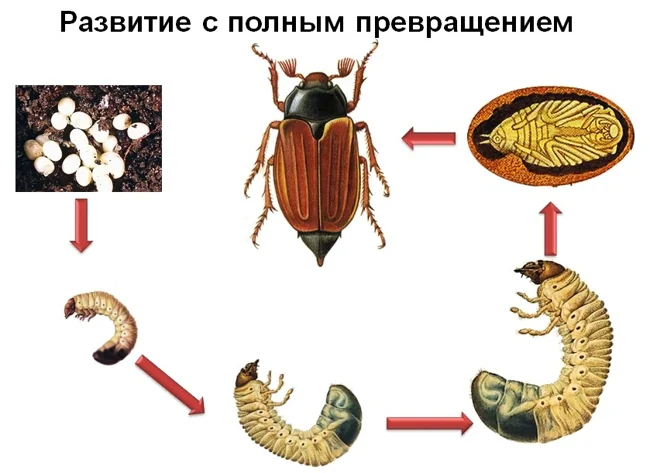
So the first stage is the egg. The stationary stage, during which the developing embryo is inside a dense shell, can be larger or smaller. It uses stored nutrients and, over a longer or shorter period of time, acquires the basic structural features of the next stage of development. At the end of this stage, the shell of the egg ruptures and the larva emerges. 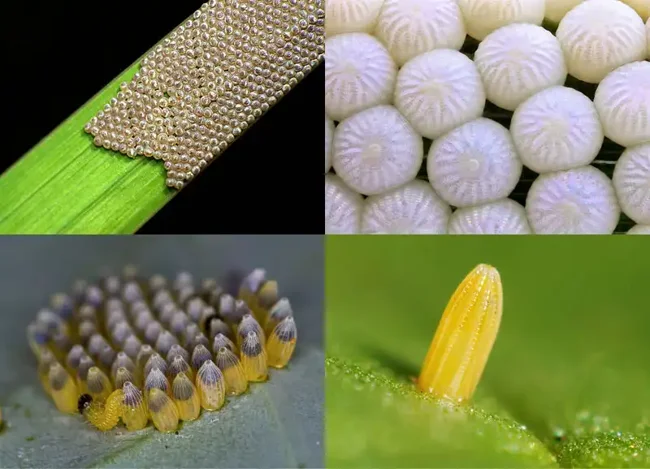
After the larva emerges from the egg, the main differences in insect metamorphosis begin.
In insects with an incomplete development cycle at young ages, the larva may differ in appearance from the imago, but as it develops, as a rule, it approaches it more and more. Insect larvae with incomplete metamorphosis are externally similar to adult individuals and, like the latter, have compound eyes, the same as in adults, mouth organs and, at older ages, well-defined external rudiments of wings. In addition, in many insects with incomplete metamorphosis, the larvae lead a lifestyle similar to the imago and can be found together with the latter. From the very beginning of the larva's existence, its main morphological differences from adults consist only in the absence of wings, genitals and structures associated with them.
The similarity of the structure of larvae and adults with incomplete transformation is mainly due to the fact that various “acquisitions” appear in such insects not with a change of stages, but gradually, throughout the larval stage, as its ages change. Due to the great morphological and biological similarity with the imago, such larvae are called imago-like or nymphs.
Dragonfly nymphs undergo a special modification - they are also similar to adults, but they live in water and have provisional, that is, specially larval, organs - gills, etc. Such larvae are called naiads.
In secondary wingless insects (bugs, lice, lice eaters, lice eaters) and orthoptera, a weakly expressed metamorphosis is observed, when the adult nymph is difficult to distinguish from the imago.
With incomplete metamorphosis, the differences between representatives of different stages are less pronounced than with complete metamorphosis. The larva of many insects (for example, soldier bugs) in general resembles a reduced adult individual.
In insects with a full development cycle, as a rule, the larva is mobile and capable of independent feeding. Usually it is characterized by a sharp “dissimilarity” to other stages of development, the presence of underdeveloped organs, primarily the genitals. The larvae also do not have wings. Their main biological task is intensive nutrition and increase in body size.
Insect larvae with complete metamorphosis, in contrast to a similar stage with incomplete metamorphosis, are objectively less developed. Their legs often have fewer segments; in caterpillars they are represented by pseudopods, while in fly larvae they are not at all. The antennae and other structures are also more primitive. The dissimilarity between true larvae and the adult phase also extends to their lifestyle - food, habitat, etc.
Having completed its growth, the true larva of the last instar stops feeding, becomes motionless, molts for the last time and turns into a pupa. Sometimes the pupa is preceded by a special stage called prepupa. In fact, this is the last age of the true larva, the transition to which is accompanied by loss of mobility, reduction in size and the beginning of the process of histolysis long before molting into a pupa.
The bulk of true larvae belong to three groups:
- Campodeoid - outwardly similar to two-tailed larvae, mobile, usually dark-colored larvae with dense integuments and three pairs of thoracic legs, a well-separated prognathic head and often with setae at the end of the body (ground beetles, diving beetles, lacewings, etc.);

- Vermiforms - sedentary, light-colored larvae, lacking abdominal and thoracic legs or with short thoracic legs (diptera, many hymenoptera, many beetles);
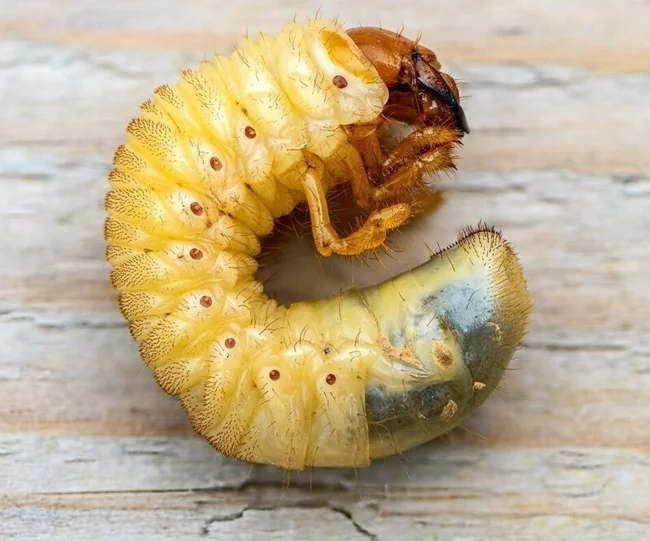
- Caterpillar-shaped, or eruciform, are moderately mobile larvae with three pairs of thoracic legs and 2-8 pairs of abdominal legs (scorpion larvae, caterpillars, pseudo-caterpillars).
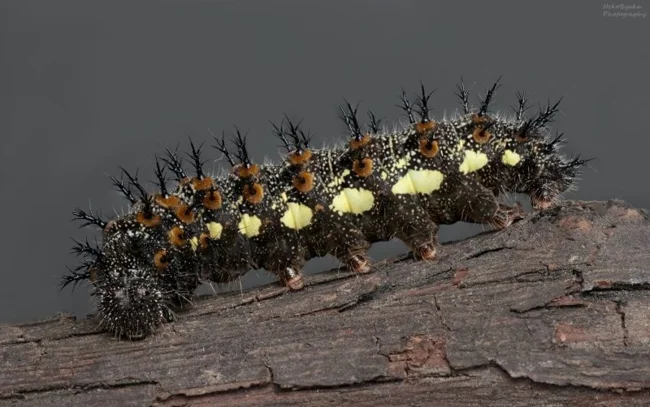
Now we come to the main difference between the types of metamorphosis, namely the stage that is absent in insects with an incomplete development cycle - the pupa. The pupa is the stage during which the insect remains motionless in secluded places, covered with a shell. During this period, in the insect’s body, with a complete transformation, significant changes in the anatomy of the body, not detectable from the outside, occur; upon completion, the body acquires all the features of an adult, after which the individual leaves the cocoon.
The pupa, unlike the larva, has protopterons (precursors of wings), does not feed, leads an inactive lifestyle, and is usually sedentary or motionless. Only some groups (mosquitoes and caddisflies) have motile pupae. It was recently found that what is common to all insects with complete metamorphosis is a special way of modifying the legs during molting from a larva to a pupa, which leads to the inability of the pupa to move
If you open an immature butterfly pupa, you will not find any transitional form between stages. The membranes will be filled with a thick white substance, and of all the organs, only the vascular and nervous systems will remain intact. Later, from this “mixture” of cells, a full-fledged insect organism is rebuilt. Wing buds appear for the first time in the pupa, and other organs also develop intensively. During this period, the anatomical transformations occurring are most noticeable.
Since for a considerable time before and after molting the pupa the insect is unable to move, in many insects the larva, before entering the pupa state, provides itself with a shelter, which to a certain extent protects it from attacks by predators and unfavorable changes in environmental conditions. During evolution, the ability to create such protective shelters independently arose in different taxa of insects, and therefore the structures of these shelters are varied. Various insects use cocoons, houses, cradles or puparia as such shelters.
A cocoon is a protective formation that the larva makes from a silk thread before entering the pronymph state. Some insects build a cocoon not from pure silk, but by adding grains of sand, soil particles or plant fragments to it. If most of the structure consists of such particles held together by silk, such a structure is called not a cocoon, but a dollhouse.
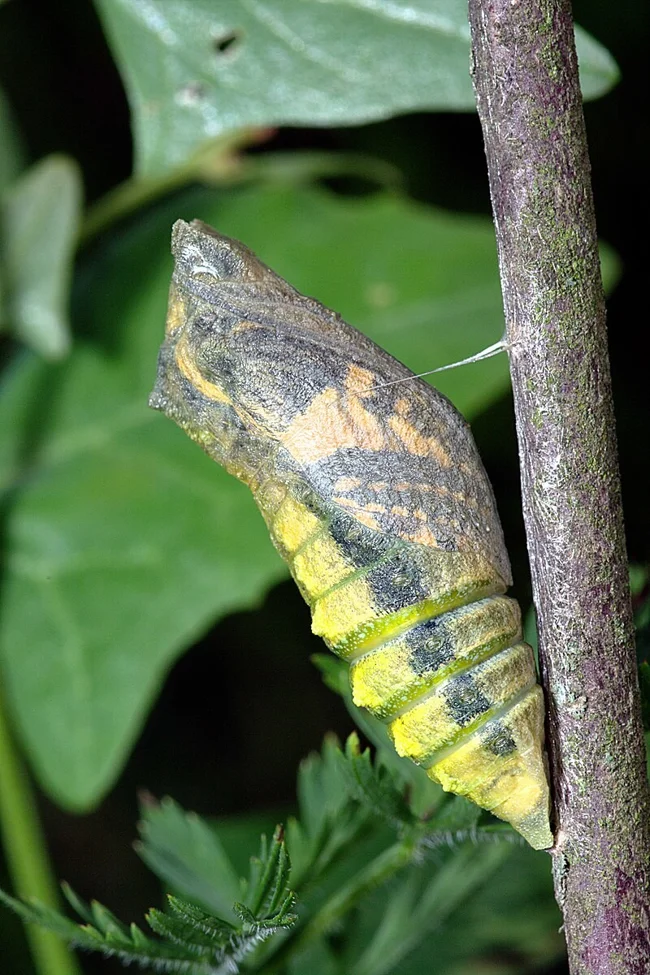
pupal cradle
- an oval-shaped chamber constructed by the larvae of a number of beetles, inside which pupation occurs and the pupa remains until the imago (adult insect) emerges. Unlike a cocoon, the cradle does not consist of silk secreted by insects, but of particles of the surrounding material: soil, wood, etc. Before turning into a pupa, the insect is located in the chamber in a certain way relative to the field of gravity: down or upside down or lying horizontally on the dorsal side.
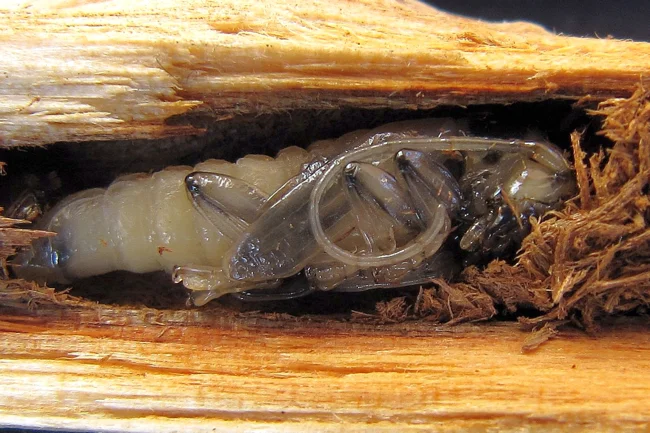
In some insects, the pupa is protected not by a structure created by it, such as a cocoon, house or cradle, but by its own larval cuticle, which has undergone certain changes. This shell of larval cuticle is called puparium. In this case, when molting from a larva to a pupa, the old larval cuticle is not shed after it detaches from the hypodermis, but a new pupal cuticle is formed on top of the hypodermis. Instead, the larval cuticle swells and hardens, forming a tight protective shell around the pupa. Since the puparium is formed by the larval cuticle, it has the same details of the external structure as the larva, but in proportions, general shape, color and hardness it can differ significantly from the larva. Puparia are characteristic of round-stitch flies, lionflies and fanflies.
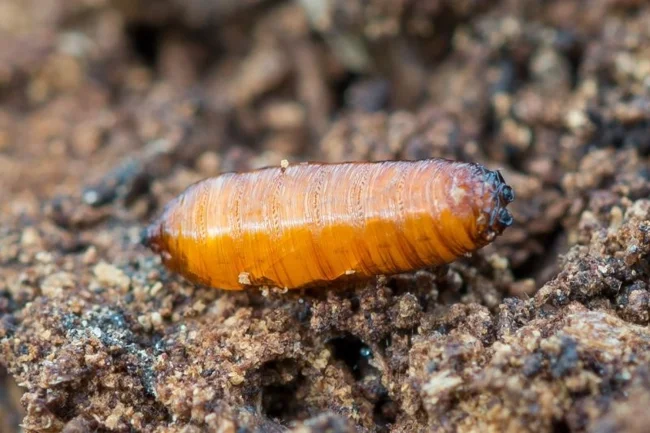
And finally, the final stage of development of all insects is the imago. Imago - has all the organs inherent in representatives of its family, genus and species, and is capable of reproduction. Adults do not molt or grow. In the adult form of the imago, insects become capable of reproduction, and, having produced offspring, usually die. At this stage, animals often become capable of dispersal.
The lifespan of insects ranges from several hours to several years.
The development cycle from the egg phase to the adult sexually mature phase is called a generation, or generation. The duration of generation depends on environmental conditions. Thus, the pine sawfly in the north has a one-year generation, and in the central regions it produces two generations per year. In Khrushchev, one generation lasts 3-5 years.
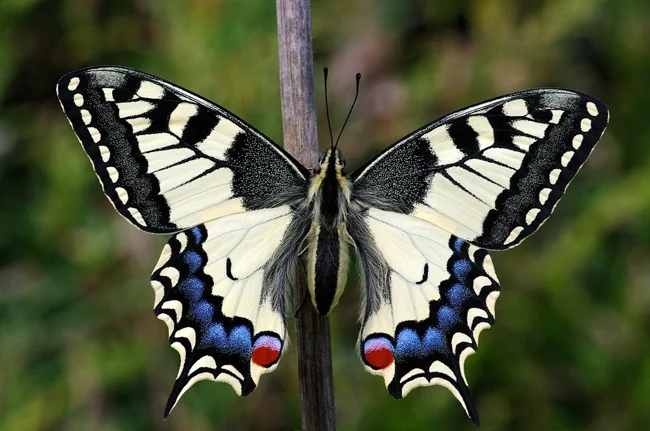
And as usual, for those who are too lazy to read the video:
